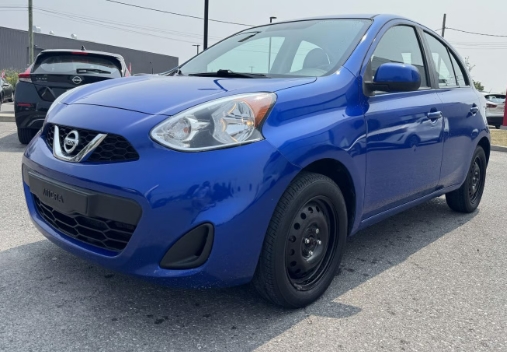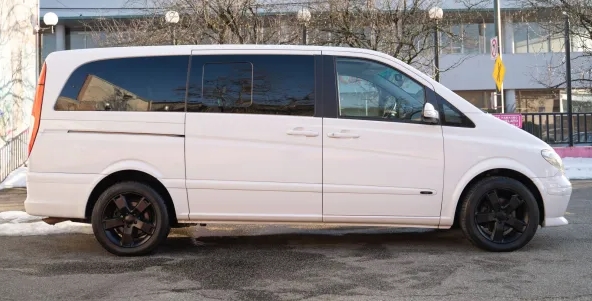The Elegant Evolution: A Deep Dive into the BMW 6 Series (630 633 635 640 645 650 M6)
The BMW 6 Series occupies a unique space in the Bavarian automaker’s lineup. It’s a blend of luxury, performance, and head-turning design, offering a more exclusive and sport-oriented experience than the core 5 Series while stopping short of the ultra-premium 7 Series. Throughout its history, the 6 Series has evolved, adapting to changing automotive landscapes and technological advancements, yet always retaining its core character: a grand tourer built for spirited driving and sophisticated style. This article delves into the rich history of the BMW 6 Series, exploring each generation, its models, and trim levels, showcasing its evolution from a classic icon to a modern masterpiece.
The Genesis: E24 (1976-1989)
The story of the 6 Series begins with the E24, a car that would set the standard for decades to come. Introduced in 1976, it replaced the aging E9 coupe, offering a sleek, long-hooded design penned by Paul Bracq. The E24 was a marked departure, embracing a more aerodynamic and modern aesthetic while retaining BMW’s signature kidney grille and Hofmeister kink.
- Years Produced: 1976-1989
- Models:
- 630CS (1976-1979): The initial offering, powered by a 3.0-liter inline-six engine.
- 633CSi (1976-1984): Replacing the 630CS, this model featured a 3.2-liter inline-six, offering improved performance.
- 635CSi (1979-1989): The performance flagship, boasting a 3.5-liter inline-six engine.
- M6 (1987-1989): The ultimate expression of the E24, powered by the legendary S38 3.5-liter inline-six derived from the M1 supercar. It was a true performance icon, capable of blistering acceleration and impressive handling.
- Trim Levels: The E24 offered a relatively straightforward trim structure, primarily based on engine displacement and the presence of optional equipment. “CSi” signified fuel-injected engines, while the M6 stood alone at the top. Interior options included leather upholstery, wood trim, and power-adjustable seats.
The E24’s design was instantly recognizable, and its performance, particularly in the 635CSi and M6 versions, garnered critical acclaim. The car quickly became a symbol of style and performance, admired for its elegant proportions, powerful engine, and sophisticated driving experience. It established the 6 Series as a true grand tourer, a car capable of covering long distances in comfort and style. The E24’s enduring appeal is a testament to its design and engineering, and it remains a highly sought-after classic today.
The Absence: A Hiatus (1990-2003)
Following the discontinuation of the E24, the 6 Series disappeared from BMW’s lineup for over a decade. The company focused on refining its existing model ranges, introducing new technologies and designs. The 8 Series coupe, introduced in 1989, filled the gap for a large, luxurious coupe, albeit with a more technologically advanced and expensive approach. This period saw BMW undergoing significant changes, adopting new design philosophies and expanding its model range, setting the stage for the 6 Series’ return.
The Rebirth: E63/E64 (2003-2010)
In 2003, BMW resurrected the 6 Series with the E63 coupe and the E64 convertible, marking a dramatic return to the grand tourer segment. This new generation embraced a bold, contemporary design language. The Chris Bangle-penned styling, with its controversial “flame surfacing” and distinctive rear end, was a departure from the E24’s understated elegance, yet it undeniably turned heads.
- Years Produced: 2003-2010
- Models:
- 645Ci (2003-2005): Powered by a 4.4-liter V8 engine, offering ample power and a refined driving experience.
- 650i (2006-2010): The 645Ci was replaced by the 650i, which featured a larger 4.8-liter V8 engine, delivering increased performance.
- 630i (2004-2005): Offered with a 3.0-liter inline-six, providing a more fuel-efficient alternative.
- 640i (2006-2010): Some markets received this model featuring a 4.0-liter inline-six engine.
- 635d (2007-2010): Featuring a powerful and efficient 3.0-liter twin-turbo diesel inline-six.
- M6 (2005-2010): The high-performance M6, featuring a 5.0-liter V10 engine derived from the E60 M5. It was a beast on the road, capable of delivering exhilarating performance.
- Trim Levels: The E63/E64 offered a wider array of features and options than its predecessor. Standard equipment included leather upholstery, iDrive infotainment system, and a range of driver assistance features. Options included active steering, adaptive headlights, and a head-up display. The M6 was distinguished by its aggressive styling cues, performance-oriented suspension, and unique interior trim.
The E63/E64 6 Series brought significant technological advancements, including the iDrive infotainment system, which initially proved controversial but eventually became a standard feature. The convertible model was particularly popular, offering open-air driving experiences with the performance of a sports car. Despite the divisive styling, the E63/E64 proved that the 6 Series could compete in the modern grand tourer market, attracting a new generation of drivers with its power, luxury, and technology.
The Refinement: F12/F13/F06 (2011-2018)
The third generation, known as the F12 (convertible), F13 (coupe), and F06 (Gran Coupe) arrived in 2011, representing a shift towards a more refined and elegant design. The controversial styling of the previous generation was toned down, replaced by a more streamlined and sophisticated aesthetic. The introduction of the Gran Coupe, a four-door coupe, expanded the 6 Series lineup, offering a blend of coupe-like styling with added practicality.
- Years Produced: 2011-2018
- Models:
- 640i (2011-2018): Featuring a 3.0-liter inline-six engine, offering a balance of performance and efficiency.
- 650i (2011-2018): Powered by a 4.4-liter twin-turbo V8 engine, delivering impressive power and acceleration.
- 640d (2012-2018): Offered with a 3.0-liter twin-turbo diesel inline-six, providing excellent fuel economy and strong torque.
- M6 (2012-2018): The performance flagship, again powered by a 4.4-liter twin-turbo V8 engine, producing even more power than the 650i. It was offered in coupe, convertible, and Gran Coupe body styles.
- Trim Levels: The F12/F13/F06 offered a sophisticated interior with a range of luxurious features. Standard equipment included leather upholstery, a premium sound system, and advanced driver assistance features. Options included a Bang & Olufsen sound system, a head-up display, and a night vision system. The M6 models featured unique interior trim, sport seats, and performance-oriented suspension. The Gran Coupe variants added rear doors and increased rear passenger space, making them a more practical choice for families or those who frequently transport passengers.
This generation saw the adoption of modern technologies like BMW’s ConnectedDrive system, offering advanced infotainment and connectivity features. The F12/F13/F06 further cemented the 6 Series’ position as a premium grand tourer, appealing to those who valued a blend of performance, luxury, and sophisticated design. The addition of the Gran Coupe broadened its appeal, demonstrating BMW’s ability to adapt to evolving consumer preferences.
.
You’ve got that cool car, but is it resting in its own cool place?
It’s visually pleasing for the surrounding areas outside of your home to look as awesome as what’s stored inside your garage! If you desire a truly inspirational environment, you should check into these plans!

.
The Transition: G32 (2017-2024)
The final generation of the 6 Series, designated G32, took a different path. Instead of focusing solely on a coupe and convertible, BMW opted for the 6 Series Gran Turismo, a fastback-style liftback sedan that replaced the 5 Series Gran Turismo. This model offered exceptional interior space and versatility, while still retaining the premium feel and driving experience associated with the 6 Series.
- Years Produced: 2017-2024 (as a Gran Turismo)
- Models:
- 630i GT (2017-2024): Powered by a 2.0-liter four-cylinder engine.
- 640i GT (2017-2024): Featuring a 3.0-liter inline-six engine.
- 630d GT (2017-2024): Featuring a 3.0-liter diesel inline-six engine.
- Trim Levels: The 6 Series GT offered a spacious and luxurious interior with a focus on comfort. Standard equipment included leather upholstery, a panoramic sunroof, and a range of advanced driver assistance features. Options included adaptive dampers, a premium sound system, and a head-up display.
The G32 6 Series GT marked a shift in the 6 Series identity, emphasizing practicality and interior space. The Gran Turismo design offered a unique combination of style and functionality, making it a versatile option for families and those seeking a more comfortable alternative to a traditional sedan. The model was well-received for its comfortable ride, spacious interior, and refined driving experience, however, it was a departure from the 6 Series heritage as a grand tourer coupe.
The Future: The 8 Series and the Electric Era
In 2018, BMW introduced a new 8 Series, effectively taking over the 6 Series’ role as the brand’s flagship coupe and convertible. The 8 Series embodies the luxury and performance characteristics of the earlier 6 Series generations, albeit with more advanced technology and a higher price point.
Simultaneously, the automotive landscape is shifting towards electric vehicles. BMW has already launched the i4 and i5, electric vehicles that bridge the gap between traditional and electric offerings. Future 6 Series could very well be electric, aligning with the brand’s commitment to electrification. It’s likely that the 6 Series name will resurface in the future, possibly as a fully electric grand tourer, continuing the tradition of combining style, performance, and luxury in a groundbreaking package.
Conclusion
The BMW 6 Series has a rich and fascinating history, marked by periods of innovation, stylistic evolution, and strategic adaptation. From its classic E24 roots to the technologically advanced modern models, the 6 Series has consistently represented a blend of performance, luxury, and design excellence. The discontinuation of the coupe and convertible models for the Gran Turismo and the emergence of the 8 Series shows the brand’s constant efforts to cater to evolving consumer demands. The future of the 6 Series is likely to be intertwined with the electric revolution, promising a new chapter in the legacy of this iconic grand tourer. Whether it’s a classic E24 or a future electric iteration, the BMW 6 Series will always be associated with a unique combination of elegance, performance, and the sheer joy of driving.







